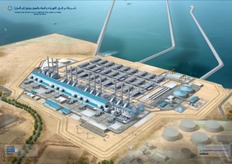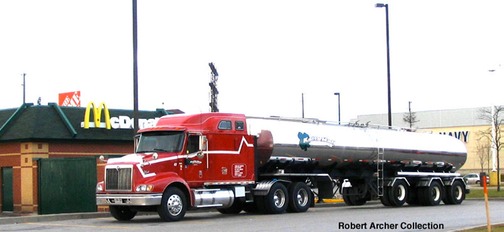Note: I first created this site in December 2012 when, here in the Midwest (the midwestern U.S.), we were seeing an extended and worsening drought. Most of our rivers were no longer running. They had been reduced to scattered and stagnate pools. And every animal species from fish to deer was on the decline. Thankfully, as of July 2013, the eastern part of the Midwest is no longer in drought. But much of the earth still is, including the American West, which is getting worse. And is close to getting out of hand, with uncontained wild fires feeding on record drought. (Arizona in flames) Worldwide, both drought and floods continue to increase. But drought is much more widespread (See United Nations page).

Unknown Waterfall
What a beauty! And we are missing her like a lover would.
Meanwhile, we all continue to hear (and see) scientists pointing to the increasing rate of icecap melting at both poles, million-year old glaciers, meeting their ends. Those gigantic monsters, dominating their landscapes, have ruled their worlds for so long. But no more. They are just melt down now. Billions of gallons a day. And their end is threatening many species of wild life, and leading coastal cities around the world to call for multidimensional plans to deal with rising sea levels. Rising sea levels . . . let's see, that's only a problem if you live on a coast, right? Whoops! Most of the largest cites in the world ARE located on an ocean coast. (And the rest of us depend on their wares.)
Yes, at the same time as we have too little water on more and more of our lands, we now have too much in the seas.
What seemed to come to me all at once was just this: water does not escape from the earth's ecosystem, it only moves around; not enough water on land; too much in the oceans. Let's solve both problems at once. Moving it around ourselves. Taking it from the seas (where there is now too much) and moving it back to land (where we need it). To be useable, this also calls for desalination -- on a massive scale.
Every river you ever saw or ever will either leads to the oceans, or is tributary to a larger river that eventually does. And water from the oceans (which make up 71% of the earth's surface, and contain 97% of the planet's water) evaporates to produce most of our water vapor for the rains that return water to the land masses. And, when it evaporates the salt is left behind, so we get fresh rain water. But that return process is now out of whack. Warming is making the oceans evaporate too quickly, and dump rain back too quickly as well. Dumping nearly all the rain back to sea. Causing drought on land, as well as more frequent and heavier storms, a particular threat to coastal areas. (April 2012 study)
We need to move some of life's vital ingredient back to land ourselves. On a huge scale. And remove the salt.

Saudi Arabian Desalination Plant in Jubail. 70% of the Saudis' drinking water is from such plants. Just last year (2011) they considered towing an iceberg to their shores from Antartica And a French engineer was ready to go. A more practical idea than one might thnk, because when sea water freezes nearly all the salt is expelled. So it thaws as fresh water. Yes, that does mean that the current massive thawing at both polar caps is fresh water. Does that give anyone food for thought?
The good news is desalination, the process of removing salt from sea and other overly saline waters, is already a highly advanced technology. In fact, desalination is in at least it's sixth generation of development. By 2009, there were already 14,451 land-based desalination plants in operation. (International Desalination Association) I say "land-based", as the 14,451 means large facilities on land (and does not include smaller operations aboard many ocean-going ships). Australia, our down-under friend, puts the figure for 2012 at over 15 000 plants world wide. (DSE, Australia).
These desalination plants are already producing billions of gallons of fresh water every day. Yes, billions. To be sure, none of these plants were built with the intention of diverting ocean water to the US Midwest. Nor with the intention of addressing 2 global warming problems at once; certainly not the second one (rising sea levels). Most of them have been built on the coasts of areas (in Saudi Arabia, Bahrain, Israel, Aruba, The United Arab Emirates) that have been arid for centuries, long before anyone thought about climate change. But at least a few (especially in Australia and Spain) have been constructed, in part, as explicit solutions to recent extended droughts.
We need more of those plants. In parts of the planet that didn't need them before. But do now. And on an even larger scale.
Are there any catches? Yes. Some of these plants (those that boil the water) operate on fossil fuels, and may contribute as much or even more to the problem as to a solution, from the standpoint of climate change. Others (using reverse osmosis) are less energy intensive, but still raise concerns about the environmental implications of some of the extractions (such as heavy metals). And even reverse osmosis plants require quite a lot of energy. Newer generations of plants are addressing these concerns in several ways, however. Among them are "cogeneration" plants which are dual purpose, producing electricity and desalinated water at the the same time; as well as geothermal desalination, low-temperature desalination (which may also be geothermal) using a low-pressure space to boil water at temperatures as low 46-50 degrees Fahrenheit; as well as solar desalination; and nanotube membranes (which filtrate the water with far less energy usage than reverse osmosis).
Another catch is the environmental impact on sea life (which is now, after a recent court ruling, an official problem in the US, such that all desalination plants in the US must address threats to sea life.) The current answers to this issue include beach wells, but require more energy cost for a given output. Across the world, much desalination is being done at a cost of around 49 to 80 cents (US) per cubic meter. Those costs can run as high as $3 in the US. Yet the same amount of bottled water costs $7949.
One last issue. Transport. No small matter, to be sure. But humans have been solving this one for thousands of years. In fact, civilization (the birth of cities, which were made possible by large-scale agriculture, permitting many people to move away from production of their own food) began only because of moving large quantities of water, especially from the Tigris, Euphrates, and Nile rivers. And the Romans could never have expanded so far, or offered their conquered peoples the better life that made them loyal (or at least accepting) without their aqueducts. And today's technology is vastly superior to theirs. The principal solutions is obvious: pipelines. It's ironic to me that just today, an AP wire (and ABC news) report came out detailing how, at the bequest of the states of Arizona, California, Colorado, Nevada, New Mexico, Utah and Wyoming, the US Bureau of Reclamation is pursuing $11.2 billion to construct a pipeline moving water from the Missouri river to the West and SouthWest. (See AP page) No surprise, as the Colorado river (long the West's Nile) is running short; so short that it it is now bone dry before it reaches it's mouth in Mexico. But, only one year aqo, the Missouri was running short, too. Very short. And as the major tributary to the Mississippi, whose lower reaches were then so depleted that barge traffic was forced to haul only half loads (even after massive dredging), this proposal is likely dead on arrival. It appears they will have to look elsewhere. The great lakes maybe? Whoops their levels have also been dropping ominously for over two decades. (To much clamor from local business and industry.) Where else can they start a pipeline? Well, where is the supply increasing rather than declining?
Pipelines take time to build. Until then, we have trucks, those same 18-wheelers that deliver everything else (unless you grow it in your garden). This more immediate solution may be viable only for drinking water, but not just for humans; livestock need water, too. You won't get that burger, unless the cow has something to drink. Same for the egg and the chicken. And egg noodles. The bacon and the pig. Not to mention milk. Whether cow or goat. And that includes cheese (pizza, anyone?) As well as ice cream, yogurt, and, yes, even chocolate!

Water for irrigation of crops will probably have to await the pipelines. As those quantities are so large. But don't underestimate what trucking can do. There are over a hundred thousand trucking companies in the US! (Ken Allen Law) It is one of the last major industries to have bucked the tide of concentration to just a handful of suppliers, of everything from automobiles to telecommunications. And that means trucking is a very competitive industry; hence, as any economist will tell you, it is an industry that provides maximum output per dollar.